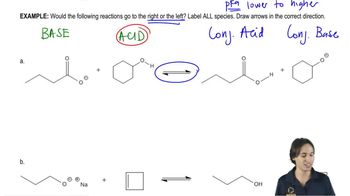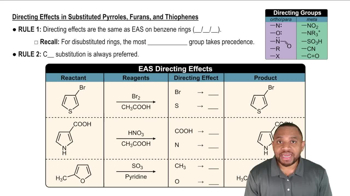Devise a synthesis for each compound, starting with methylenecyclohexane and any other reagents you need.
a. 1-methylcyclohexanol

 Verified step by step guidance
Verified step by step guidance Verified video answer for a similar problem:
Verified video answer for a similar problem:



 6:32m
6:32mMaster General properties of acid-catalyzed hydration. with a bite sized video explanation from Johnny
Start learning